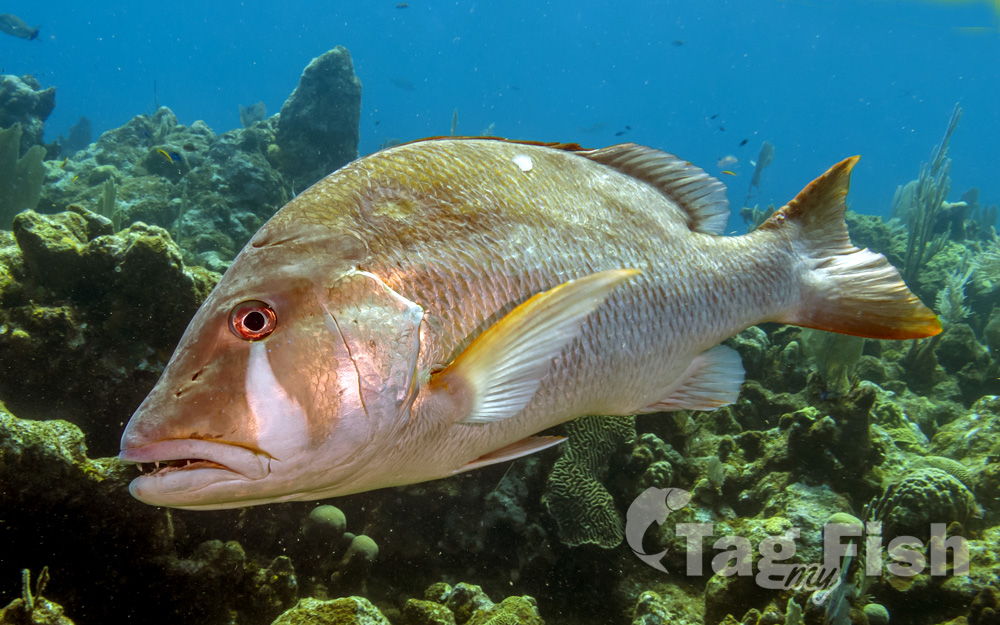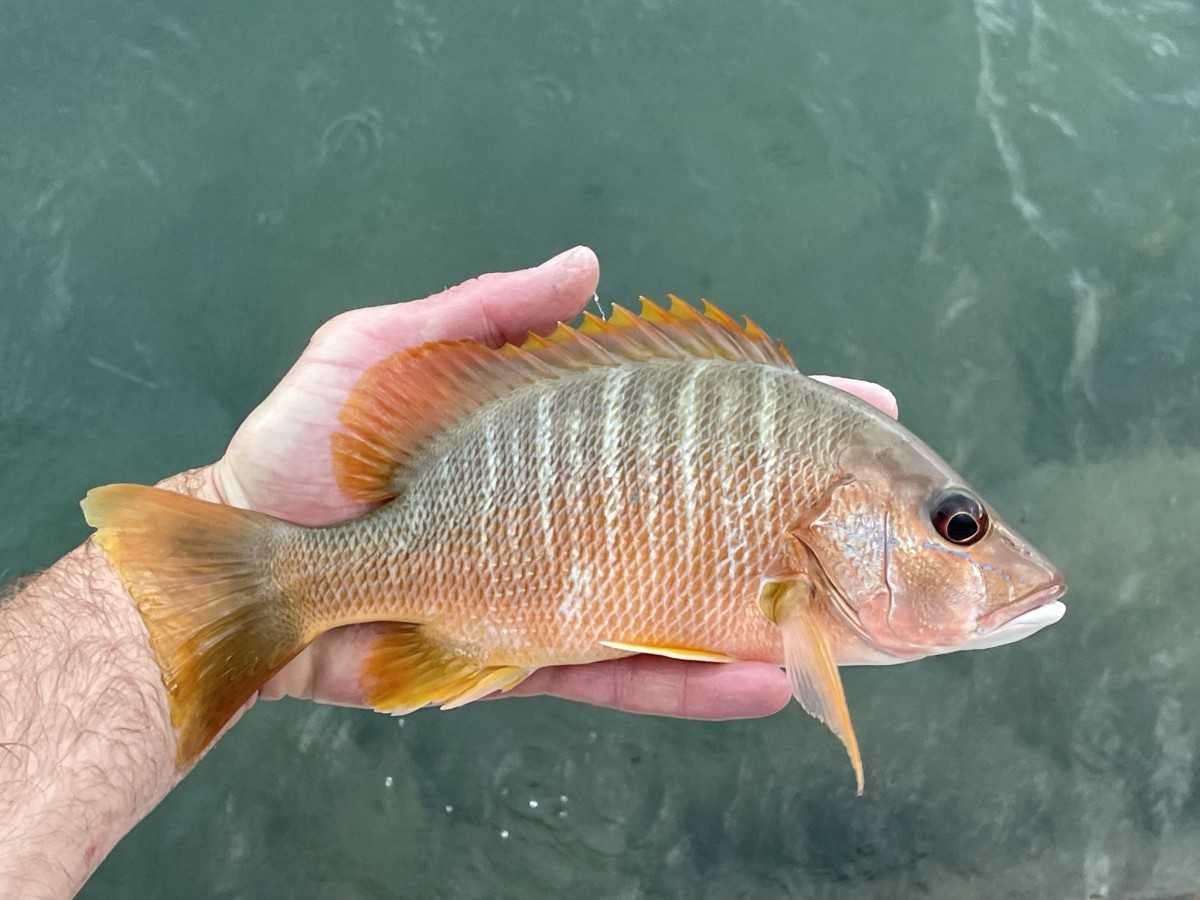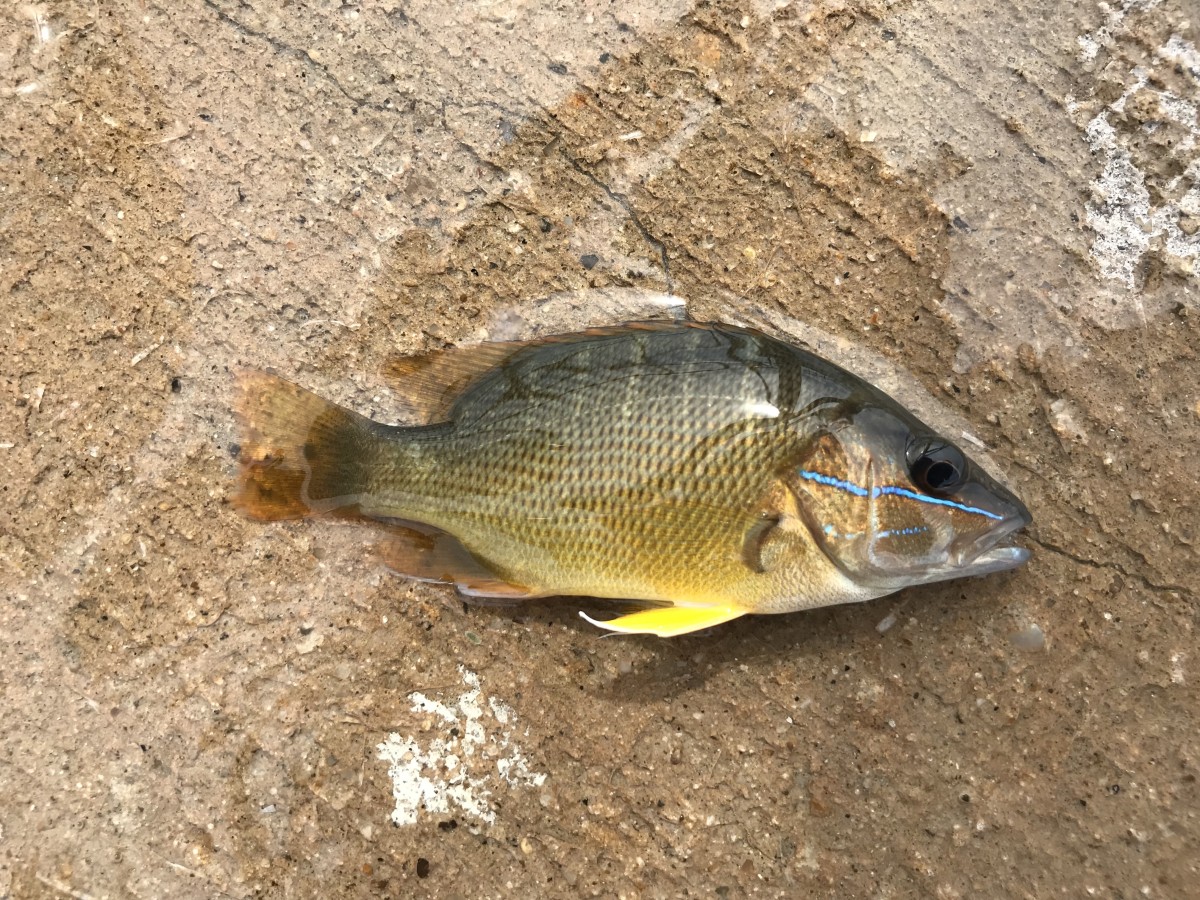Dog snapper
(Lutjanus jocu)

Classification
General data
The dog snapper (Lutjanus jocu), also known as the dogtooth snapper, pargue, or snuggletooth snapper, is a species of marine ray-finned fish, a snapper belonging to the family Lutjanidae. It is native to the Atlantic Ocean. It is a commercially important species, and is popular for display in public aquaria.
Description
The dog snapper has a relatively deep, compressed body. It has long pectoral fins, an emarginate or slightly forked caudal fin, a rounded anal fin, and a bilobed dorsal fin.
Its nostrils are arranged in front and rear pairs and are simple tubes. It has a relatively large mouth which has a moderately protrusible upper jaw that slips under the cheekbone in the closed mouth.
A pair of very enlarged canine-like teeth in the upper jaw stay visible when the mouth is closed. The vomerine teeth are arranged in a chevron or crescent shape with a long rearwards extension running from its middle, creating an anchor-like shape. There is also a patch of teeth on each side of the roof of the mouth. The preoperculum has a weakly developed incision and knob.
The dorsal fin has 10 spines and 14-15 soft rays while the anal fin contains 3 spines and 8 soft rays. The long pectoral fin extends as far as the anus and contains16-17 rays.
This fish attains a maximum total length of 128 cm (50 in), although 60 cm (24 in) is more typical, and the maximum published weight is 28.6 kg (63 lb).
The adults have olive green upper flanks and backs, which may be marked with slender light-colored bars. The lower flanks and abdomen are pale red and copper. Beneath the eyes, there is a white triangular bar. The pectoral, pelvic, anal fins and outer parts of the soft rayed part of the dorsal fin and the caudal fin are reddish, while the remainder of the dorsal and caudal fins are olive green in color. The juveniles have a longitudinal blue line underneath the eye extending to the gill cover, this breaks up into a line of spots in the adults.
Distribution and habitat
Dog snapper is mainly found in the western Atlantic Ocean where their range extends from Massachusetts south to São Paulo in Brazil, including Bermuda, the Caribbean Sea, and Gulf of Mexico, and from Saint Paul’s Rocks south to Principe in the eastern Atlantic. There is a record from the Ligurian Sea in the western Mediterranean from November 2005.
Adults are generally found around rocky outcrops or coral reefs, while juveniles tend to remain primarily within estuaries and occasionally within rivers. Dog snappers are known to have occurred at depths in excess of 100 m (330 ft) in some areas but they are more frequent at depths of 5 to 30 m (16 to 98 ft).












